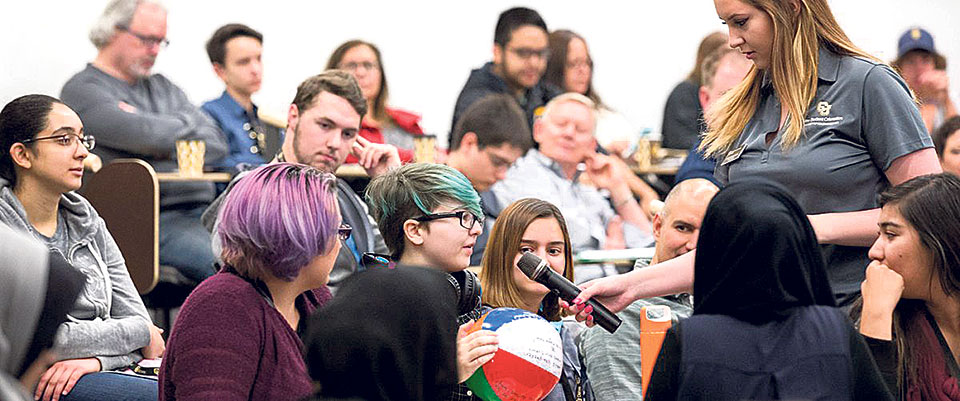Understanding the world through travel
6 years ago
Amshu is a lecturer at Prime International School/Saraswati Multiple Campus and zumba certified fitness instructor.

6 years ago

I was delighted to attend the 23rd International Conference of Nepal English Language Teachers’ Association (NELTA), of which I am a lifetime member. The main themes of the event were content, language and technology in English language teaching.
Experts and speakers from both home and abroad participated in the event that was held at Galaxy Public School in Kathmandu. During one of the discussions I came across a new idea, thanks to Dr Maggie Sokolik of the United States, that the academic classroom should be student-oriented rather than teacher-oriented because it focuses on the student instead of the teacher.
In the context of Nepal, the way of teaching is still traditional where there are less interaction and less communication between educators and students. As a result, the students fail to understand the subject matter and lose the interest towards the course. Therefore, a student-centered classroom is essential as the student-oriented learning involves the interaction of a team of students that experience creative learning to be used in the real world. In addition, student-oriented classroom encourages the students to be more active to find the information they need in a creative way. The teacher can act as a facilitator in this process.
To make the classroom student-oriented, the educator should first try to research about what kind of readings the students enjoy, what kind of writings would they like to do, and what type of assignments they enjoy. After that, the instructor can assign the students to do online research for a class topic and to look up sites that show how to pronounce difficult words. Students can prepare glossaries or other reading aids for an assignments and they can prepare a short lecture or speech on a particular subject and motivate students to engage themselves in group discussion. After practicing these activities, the students become more responsible for their learning and are aware of the material they are learning. They understand why it is significant.
On the other hand, teacher-oriented classroom is conventional method of teaching. The lecture follows a strict format where the teacher talks and the students listen to what she/he has to say and this type of classroom is quiet and less productive. In this learning approach, the tutor should inspire the students to create their own learning goals and encourage them to participate in classroom discussions, debates and express their own opinions. Furthermore, the instructor must measure achievement based on individual student performance, instead of comparing each person to their peers. So, throughout the conference, I was enlightened that the learners learn more from what they discover themselves than from what their teachers discover for them. I was also delighted to hear the editor and chief of NELTA journal Dr. Ram Ashish Giri, when he said: “It is not important that we cover in our classrooms; what is important is what we discover in them.”
Gurung is faculty member of Saraswoti Campus and Prime International School.
Leave A Comment